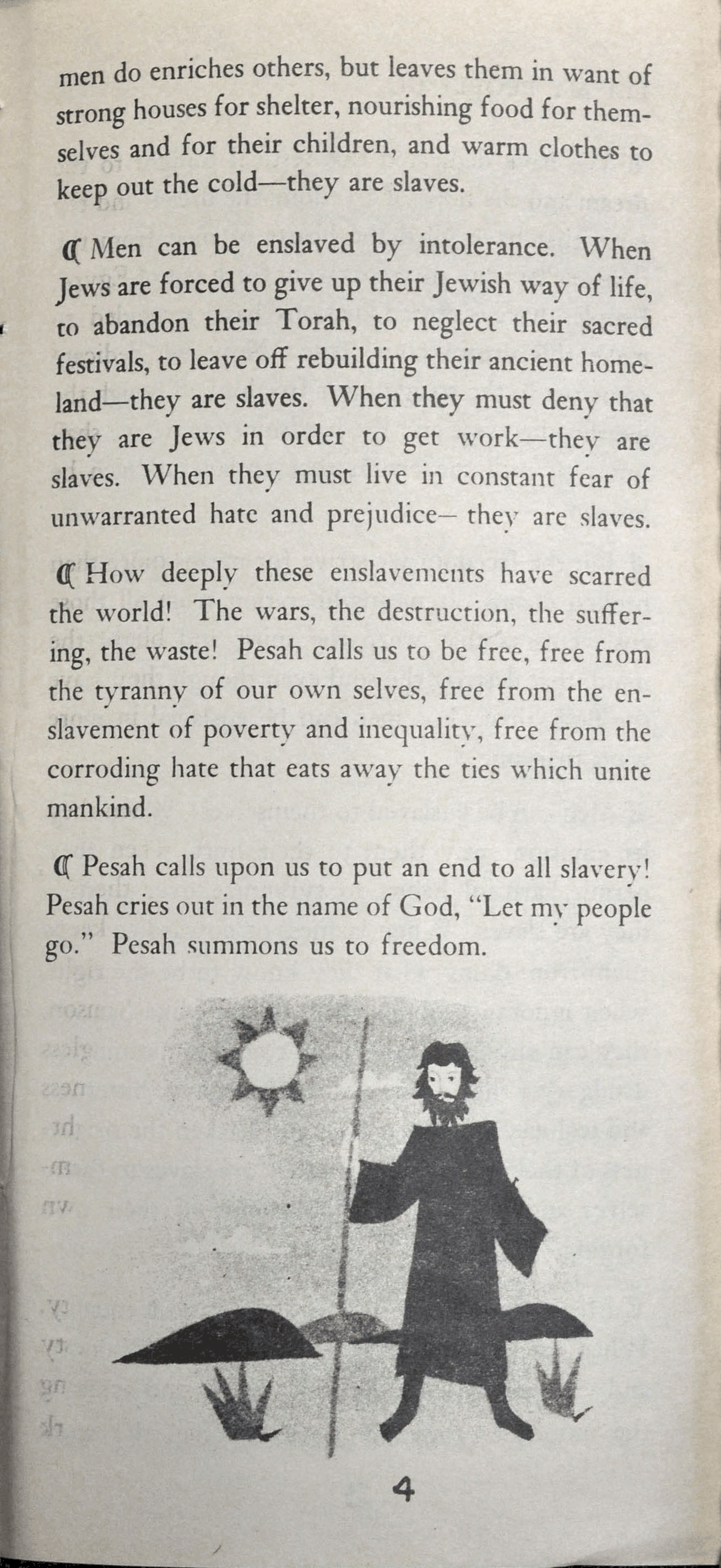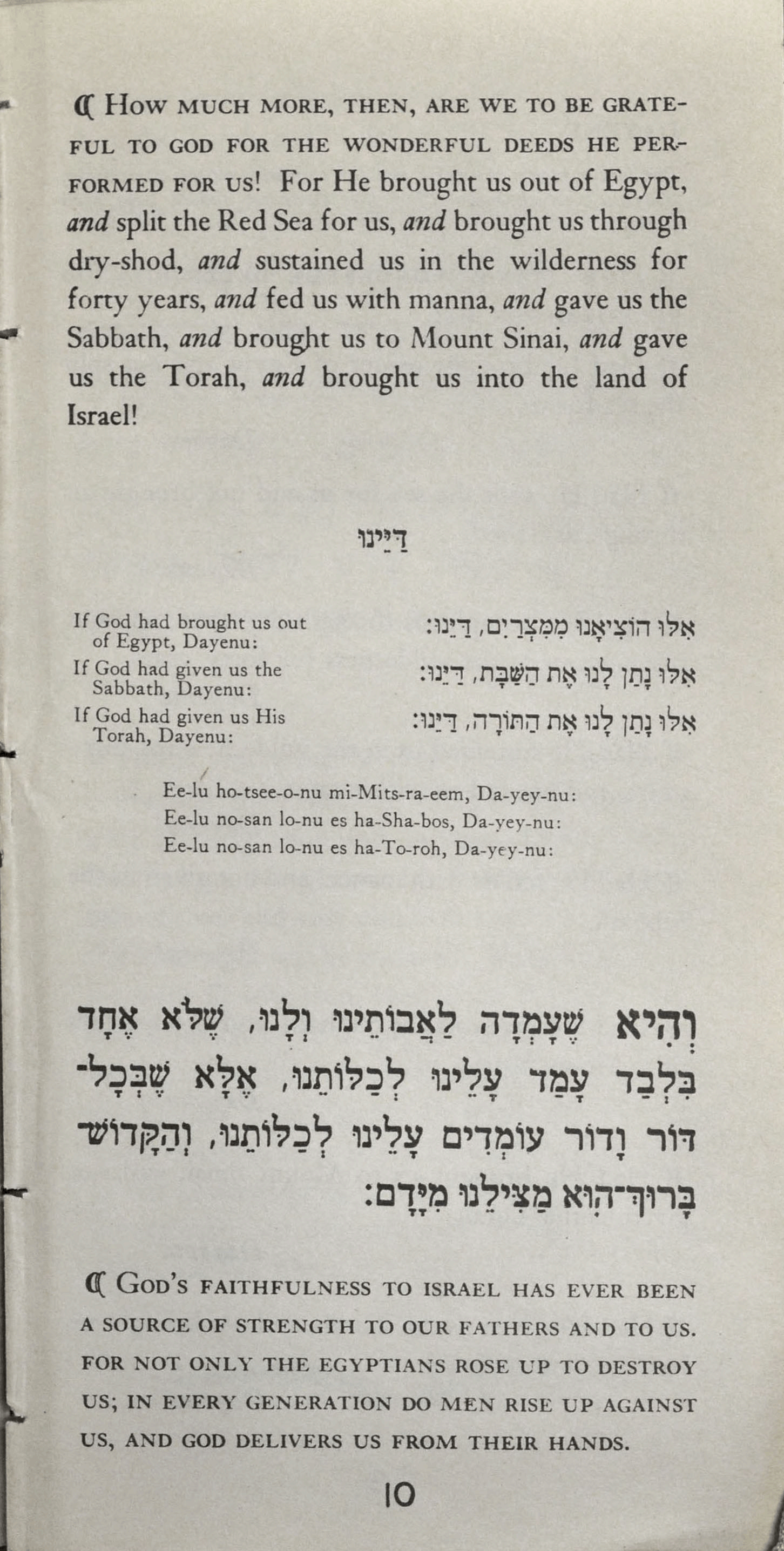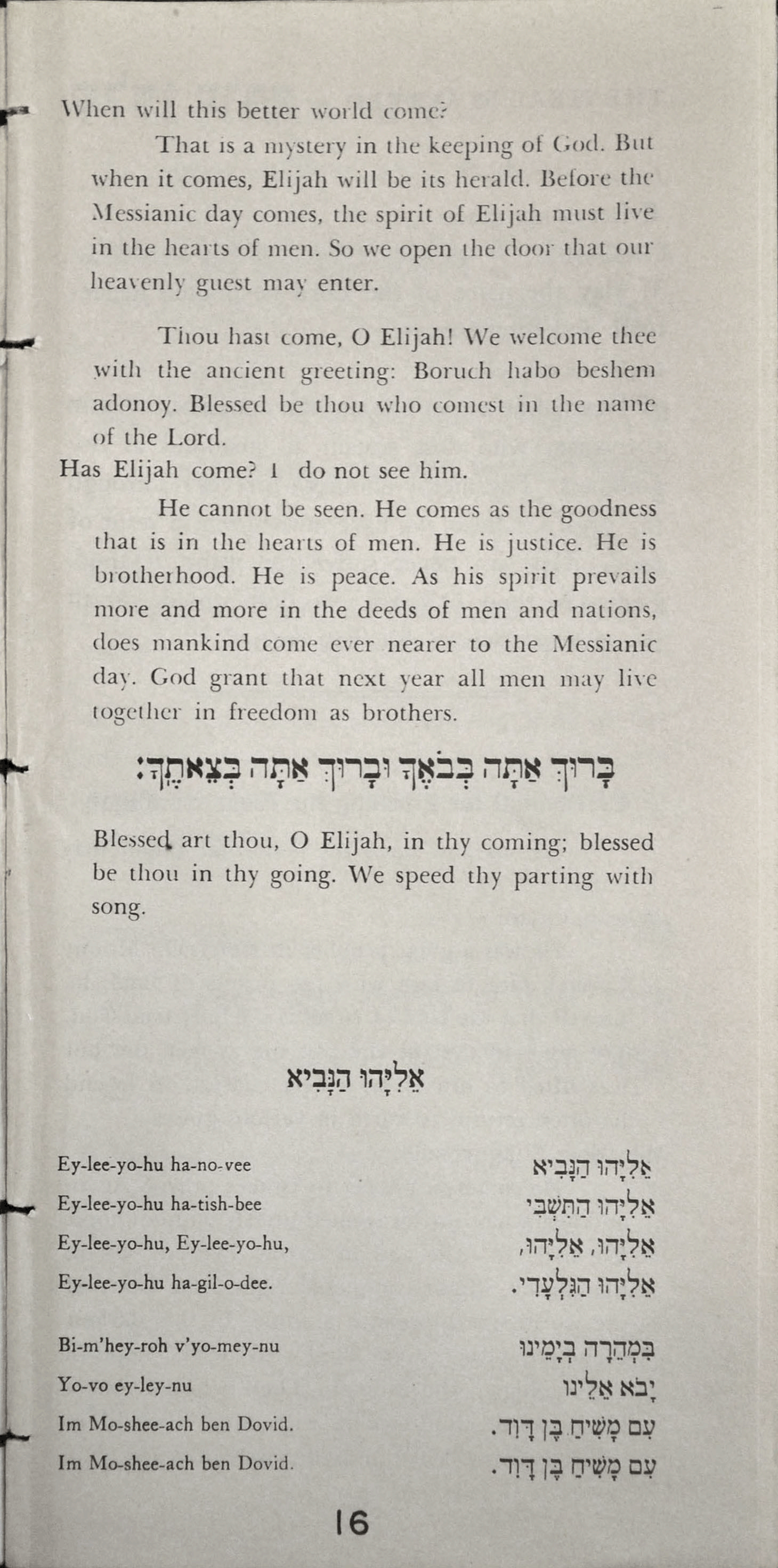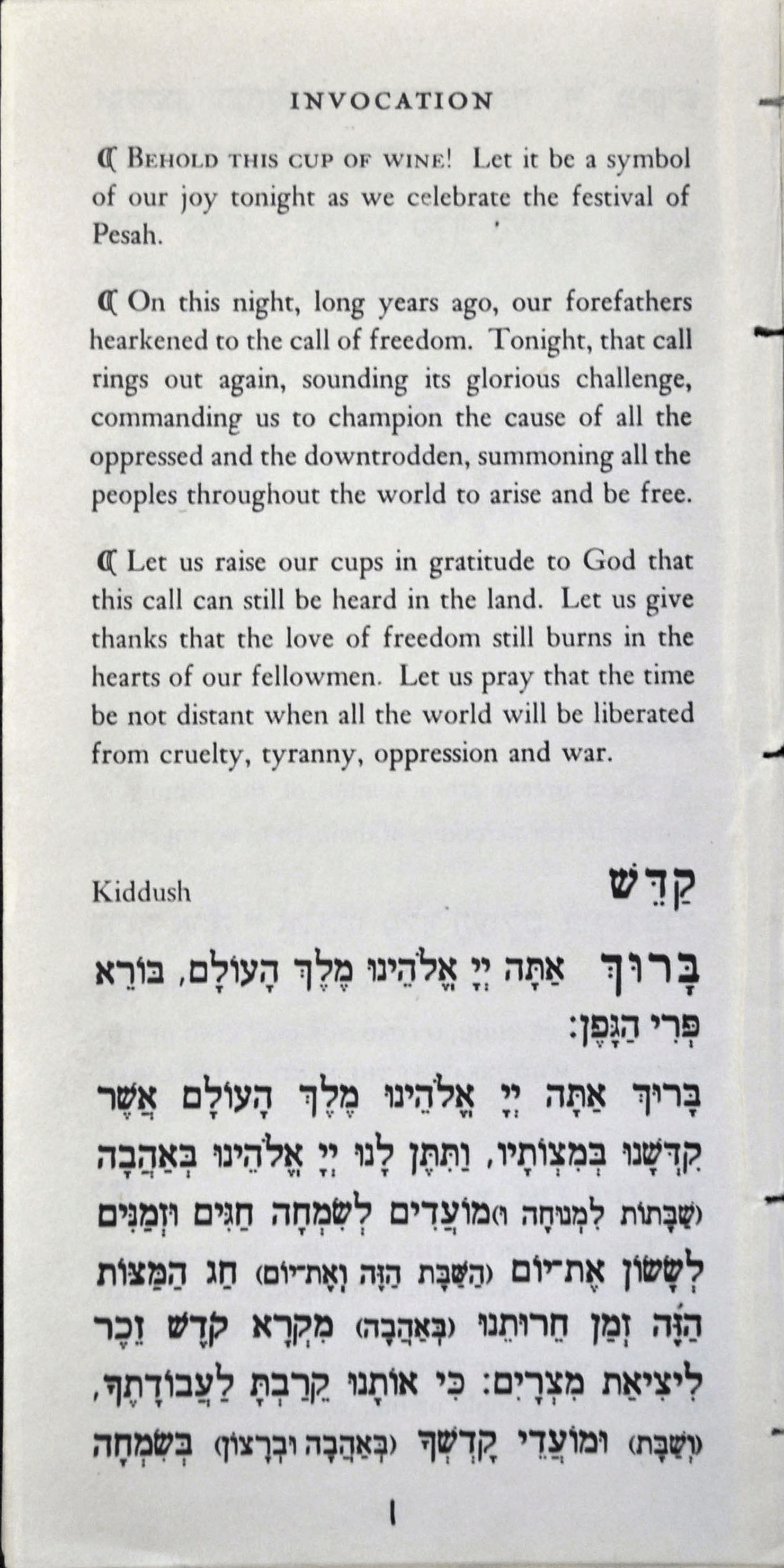 Title Page: SEDER IN THE MARIANAS – PASSOVER – 5705 – 1945
Title Page: SEDER IN THE MARIANAS – PASSOVER – 5705 – 1945
 Acknowledgements and Officiating Chaplains
Acknowledgements and Officiating Chaplains
 Page 2: Kiddush Blessing (continued); Blessing over Greens (Parsley); Dividing the Matzah (Among 2,700 servicemen, who was the lucky Private First Class who found the afikomen?!)
Page 2: Kiddush Blessing (continued); Blessing over Greens (Parsley); Dividing the Matzah (Among 2,700 servicemen, who was the lucky Private First Class who found the afikomen?!)
Page 3: A noteworthy section of the Guam Haggadah – an uneasy if not irresolvable balance between particularism and universalism – is found under the heading “Let My People Go”.
The text obviously, pointedly, and directly address Jewish peoplehood, Zionism (albeit without that word), and a sense of collective pride, through the text, “Men can be enslaved by intolerance. When Jews are forced to give up their Jewish way of life, to abandon their Torah, to neglect their sacred festivals, to leave off rebuilding their ancient homeland – they are slaves. When they must deny that they are Jews in order to get work – they are slaves. When they must live in constant fear of unwarranted hate and prejudice – they are slaves.”
The thrust of that text is curiously counterweighted by setting Pesach in the form of a generalized yearning for “freedom”, but “freedom” defined as an individual, if not philosophical, if not universalistic value of the Enlightenment – rather than a particularistic and covenantal concept – set in the frame of the war effort of the United States, and the Allies, in general.
This is evident in such statements as, “Peoples have suffered, nations have struggled to make this dream come true. Now we dedicate ourselves to the struggle for freedom.” “It means liberation from ail those enslavements that warp the spirit and blight the mind, that destroy the soul even though they leave the flesh alive. For men can be enslaved in more ways than one.” “Pesach calls us to be free, free from the tyranny of our own selves, free from the enslavement of poverty and inequality, free from the corroding hate that eats away the ties which unite mankind.” “Pesach calls upon us to put an end to all slavery! Pesach cries out in the name of God, “Let my people go.” Pesach summons us to freedom.”
Though I do not have access to the 1942 edition of Rabbi Kaplan’s New Haggadah, I wonder if this text – perhaps reflective of the hopes, aspirations, and ambivalence pervasive among early and mid twentieth century American Jewry (and still today?…) – is derived from that work.
 Page 4: “Let My People Go” (continued); Art depicting Moshe Rabbenu in the wilderness
Page 4: “Let My People Go” (continued); Art depicting Moshe Rabbenu in the wilderness
 Page 5: “Go Down Moses”; Art depicting Moses and Aaron confronting Pharaoh
Page 5: “Go Down Moses”; Art depicting Moses and Aaron confronting Pharaoh
 Page 6: Presentation of Matzah; The Four Questions
Page 6: Presentation of Matzah; The Four Questions
 Page 7: The Four Questions (continued); Pesach narrative
Page 7: The Four Questions (continued); Pesach narrative

Page 8: Pesach Narrative (continued)
 Page 10: Dayenu (continued); “In every generation do men rise up against us, and God delivers us from their hands.”
Page 10: Dayenu (continued); “In every generation do men rise up against us, and God delivers us from their hands.”
 Page 11: Display of Symbols of Pesach (Shankbone and Matzah)
Page 11: Display of Symbols of Pesach (Shankbone and Matzah)
 Page 12: Display of Symbols of Pesach (maror (bitter herbs))
Page 12: Display of Symbols of Pesach (maror (bitter herbs))
 Page 13: Call to Hallel; Hymn “Praise the Lord”
Page 13: Call to Hallel; Hymn “Praise the Lord”
 Page 14: Benediction over Matzah; Blessing over Bitter Herbs
Page 14: Benediction over Matzah; Blessing over Bitter Herbs
 Page 15: The Pesach Meal is Served; Opening the Door for Elijah
Page 15: The Pesach Meal is Served; Opening the Door for Elijah
 Page 16: Opening the Door for Elijah (continued); Eliyahu Hanavi
Page 16: Opening the Door for Elijah (continued); Eliyahu Hanavi
 Page 17: Closing Benediction; Singing of America
Page 17: Closing Benediction; Singing of America
 Back Cover: Printed by 949th Engineer Aviation Topographic Company
Back Cover: Printed by 949th Engineer Aviation Topographic Company




